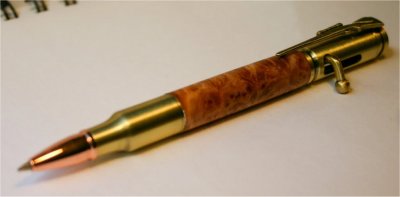Trickle Systems for Aquatics Replaces Water Changes
 The concept: Instead of a drain-and-fill water change, folks can put water to an aquatics system and trickle a small amount of water into that system all the time, 2 quarts an hour in a big 300 gallon tank. The tank stays ‘full’ at the bulkhead or standpipe and the fish enjoy a lot of fresh water every week.
The concept: Instead of a drain-and-fill water change, folks can put water to an aquatics system and trickle a small amount of water into that system all the time, 2 quarts an hour in a big 300 gallon tank. The tank stays ‘full’ at the bulkhead or standpipe and the fish enjoy a lot of fresh water every week.
Overflow Water Changes.
This is 100% dependent on your ability to carry off water from your tank(s) in small amounts, but 24 hours a day. The overflow lines aren’t carrying much water at any given time so they don’t have to be big. If you cannot dispose overflow water, then the trickle water replacement system isn’t for you.


At Home Depot and Lowe’s they have 1/4 inch “irrigation lines” and emitters.
You’d need a hose bib to supply the irrigation system.
Alternatively, you can ‘saddle tap’ a water line in the house, as shown in the picture.
If you come off a hose bib, you come off that to a 1/4″ inch nipple, a short run of line, and then engineer a 25psi regulator, and then branch off with 1/4″ elbows to go to each tank with an emitter, 0.5 gph is fine.
To dispose water:
Put a bulkhead at the water line in each tank. A standpipe also works very well. In any event, the bulkhead in the side of the tank, or the standpipe IN the tank will set the water level in the vessel. As you trickle water into the system, it will overflow the bulkhead or standpipe and discharge away.
Water will be leaving each tank at 2 quarts an hour if you use a 0.5 gph emitter. So as you can see, water flow through those ‘over flows’ is slight, and the pipe doesn’t have to be more than 1/2 inch. Screen the bulkhead if you’re worried about fish sticking their heads in.

Every day, each tank will be getting 12 gallons of water.
Each week it’s 84 gallons of water.
That’s 25% water change per WEEK. Plenty for health under very heavy loading without stripping slime coat.
You don’t need dechlor. That’s because chlorine degasses completely in 12 hours in agitated water, 24 hours in non-agitated water.
That means that at any given hour, there’s 2 quarts activating chlorine and 2 quarts aging out.
A total of 12 gallons per day of ‘chlorinated water’ in 350 gallons means the chlorinated water levels will be running about 1.5% at any given time, worst case; because each 2 quarts of “new” water are always aging out. Up to a 25% water change can be done WITHOUT dechlorinator in water with a decent organics-level.
Chlorine isn’t a ‘thing’ with this turnover.
A kit to do ALL your tanks (besides installing the bulkheads and overflow runoff lines) is a kit that looks like THIS (Click) which costs like, $25
The kit I linked does not seem to have a 25psi regulator. That would be bought separately and installed as in the picture you see next.
 When you’re using 0.25 – 1.0 gph emitters on 1/4″ irrigation line, the flow rates are “reliable” when the water pressure is regulated to 25psi. If the pressure is too high, it seems to punch the membranes in the emitters and they underflow. I recommend (highly) that you regulate the line pressure to 25psi.
When you’re using 0.25 – 1.0 gph emitters on 1/4″ irrigation line, the flow rates are “reliable” when the water pressure is regulated to 25psi. If the pressure is too high, it seems to punch the membranes in the emitters and they underflow. I recommend (highly) that you regulate the line pressure to 25psi.
Making an inexpensive inline 25psi irrigation line regulator:
Coming off a hose bib requires:
[1] 25psi regulator: https://amzn.to/2YAmiQ4
[3] 1/4″ barb adapter from 3/4″ FMT: https://amzn.to/2MPzOIC
[1] 3/4″ to 3/4″ double nipple adapter: https://amzn.to/31tMhp8
So you come off the hose bib with the 1/4″ barb adapter to your 1/4″ line and then the line runs to the second 1/4″ barb adapter, to the 3/4″ FMT male-to-male adapter, to the 25psi regulator and then to the third 1/4″ barb adapter — and then back to the 1/4″ irrigation line to the tanks.

 It is IMPERATIVE to use high quality HARD 1/4″ line. If you use soft line, it may release the emitter, allowing a LOT of water into smaller tanks and killing fish with chilling and chlorine. Mainly chilling.
It is IMPERATIVE to use high quality HARD 1/4″ line. If you use soft line, it may release the emitter, allowing a LOT of water into smaller tanks and killing fish with chilling and chlorine. Mainly chilling.
Another post to SEE ALSO (CLICK)
.
.





